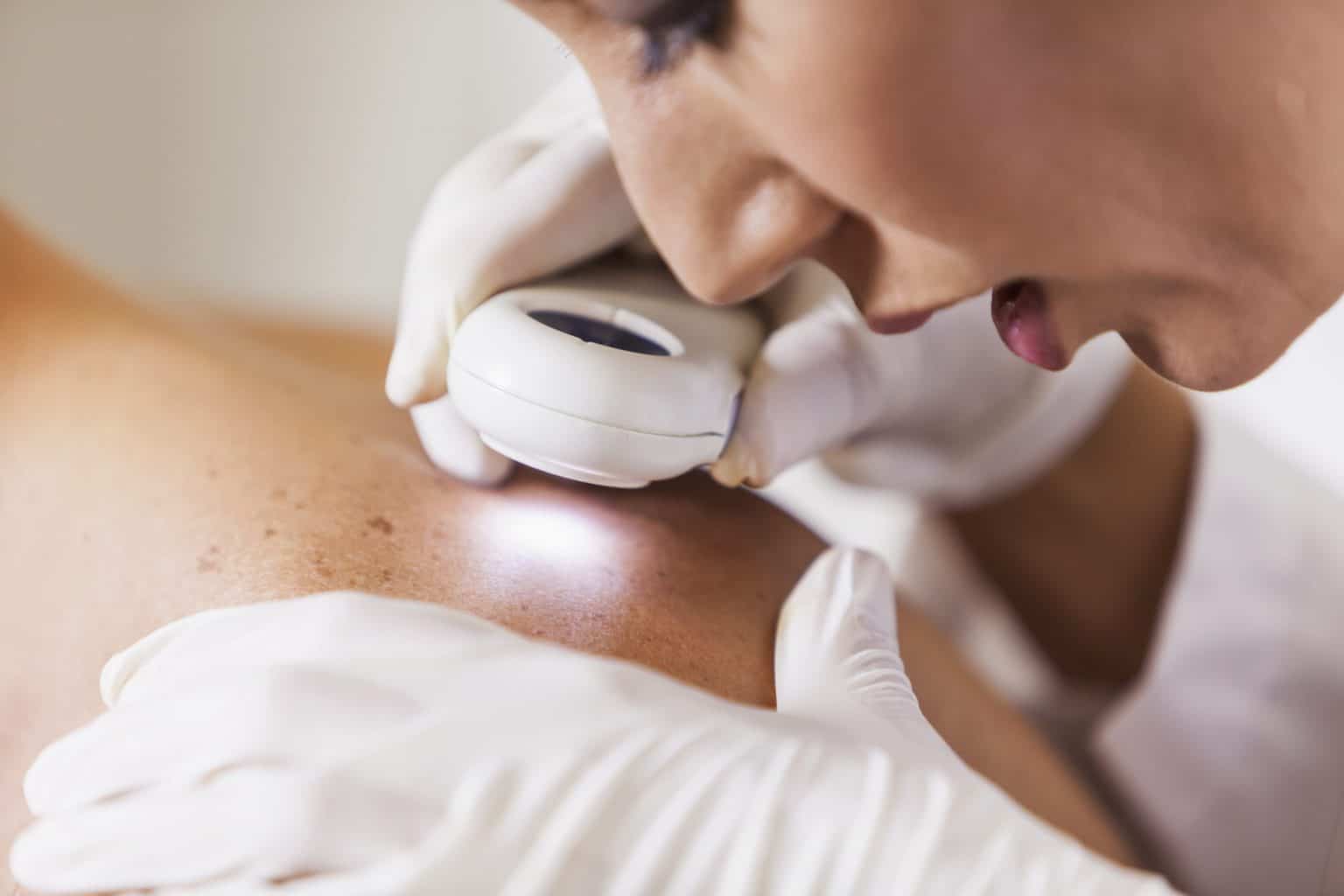A skin lesion is a part of the skin that has an abnormal growth or appearance compared to the skin around it. There are two categories of skin lesions, primary and secondary. Primary skin lesions are present at birth or are acquired over your lifetime. A birthmark would be an example of a primary skin lesion. Secondary skin lesions evolve from primary lesions or develop as a consequence of your activities. Melanoma resulting from sun exposure would be an example of a secondary skin lesion.
At Great Lakes ENT Specialists, we diagnose and treat all types of facial skin lesions with an emphasis on facial skin cancer.
Causes

Facial skin cancer is the result of mutations in the skin cells that cause them to grow out of control. The biggest risk factor for skin cancer is ultraviolet radiation from sunlight and tanning beds. Those with fair skin, a history of sunburns and excessive sun exposure, moles, or a family history of skin cancer are more prone to developing it.
Symptoms
Facial skin cancer is divided into three different types:
- Basal cell carcinomas affect the face, ears, and scalp, and are characterized by a pearly, waxy bump; a flat, flesh-colored lesion; or a brown scar-like lesion.
- Squamous cell carcinomas are most typically found on the face, lips, and ears. Signs include a firm, reddish nodule, and a flat lesion with a scaly or crusted surface.
- Melanomas can occur anywhere, but are commonly found on the head or neck. Symptoms of facial melanoma include a mole that changes in size or color, or bleeds; a brownish spot with dark speckles; a lesion with an irregular border and parts that appears red, blue, blue-black, or white; and dark lesions on the mucous membranes lining the nose and mouth.
There are a few other types of facial skin cancers that are less common. These present with red or purple patches on the skin or mucous membranes; firm, shiny nodules in the hair follicles or just beneath the skin; or hard, painless nodules on the eyelids or other parts of the face.
Treatments
Treatment for facial skin cancer depends on the type, size and location of the cancer, as well as your overall health. Small lesions limited to the surface of the skin can often be removed with a simple skin biopsy. Other superficial skin cancers detected early can often be removed by freezing with liquid nitrogen or vaporizing with laser therapy. Excisional surgery for larger growths, can also be effective in cutting out cancer without causing damage to the surrounding skin. When surgery isn’t an option, radiation therapy may be recommended. Chemotherapy involves the use of creams or lotions that contain cancer-killing drugs applied directly to the skin. This treatment is especially effective in cancers that are confined to the top layer of skin. For cancers that have spread to other parts of the body, systemic chemotherapy is often effective.
Call Great Lakes ENT Specialists at (231) 489-8151 for more information or to schedule an appointment.